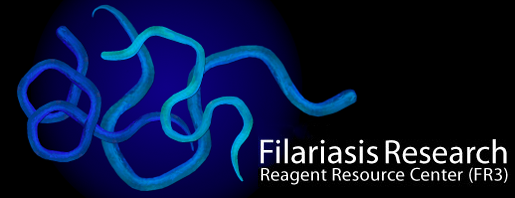Necropsy for Dirofilaria immitis
(for a printer version, click here to download the Word file)
TITLE: Necropsy for Dirofilaria immitis in Dogs, Cats, and Ferrets
SOP NUMBER: 8.56
REVISION NUMBER: 4
1.0 PURPOSE
The purpose of this document is to describe the procedures used in necropsying dogs, cats, and ferrets for recovery and examination of Dirofilaria immitis adult worms.
2.0 PROCEDURES
- 2.1 Just prior to necropsy, each dog or cat is given by intravenous injection of a combination of 1-2 ml of heparin (1000 U.S.P. units/ml) and a lethal dose (approximately 0.1 ml/lb) of Beuthanasia-D7 Special (Schering Corp., Kenilworth, N.J. 07033) euthanasia solution (or other appropriate euthanasia solution). Ferrets are given a combination of ketamine (20 mg/kg b.w.) and xylazine (2.5 mg/kg b.w.) by IM injection or other suitable drugs.
- 2.2 For dogs, the pleural and peritoneal cavities are examined for D. immitis worms, and the anterior and posterior venae cavae are clamped before removal of the heart and lungs. For cats and ferrets, the pleural and peritoneal cavities are examined for D. immitis worms, and the anterior vena cava is clamped (this is not necessary for ferrets); then the heart and associated vessels, lungs, and liver are removed together as one unit. For dogs and cats that received heartworms by intravenous transplantation, examination of the peritoneal cavity is not necessary.
- 2.3 The venae cavae, precava, right atrium, right ventricle, and pulmonary arteries (including those coursing through the lungs) are dissected and examined for worms. Additionally, for cats, the entire posterior vena cava is also examined for worms; for ferrets, the anterior and posterior venae cavae are examined for worms.
- 2.4 The worms from each animal are recorded as either dead or live. Worms that are abnormal in both motility and appearance are considered dead; all other worms are considered live. After examining the worms, they are then sexed, counted, and preserved in 10% buffered formalin, unless another fixative is specified in the protocol.


